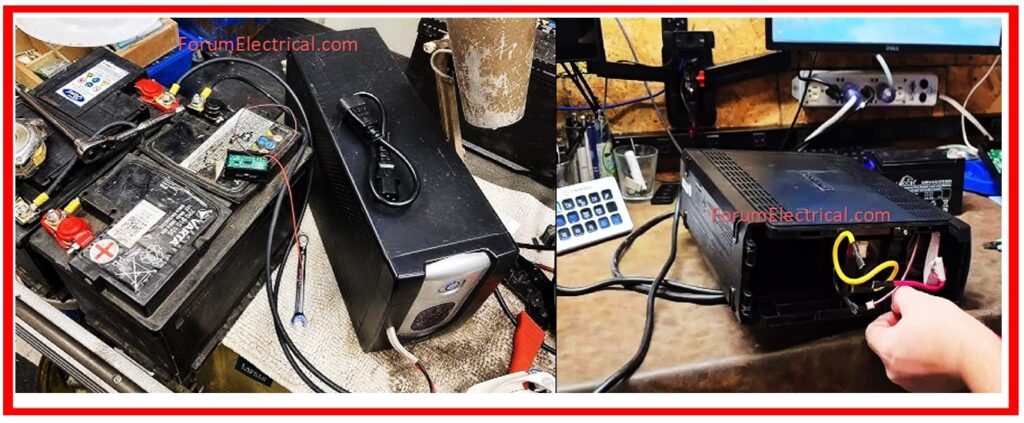To ensure an electrical installation’s safety, performance, and reliability, an entire checklist of functional tests must be performed.
- General Functional Checks and Inspections
- MV Switchboard and MV Cable Testing
- LV Switchboard Testing
- Cable Testing
- Diesel Generator / Generating Plant Tests
- Hydraulic Tests
- LV Power Distribution System Testing
- Lighting System Testing
- Lightning Protection System Testing
- UPS (Uninterruptible Power Supply) Testing
- Conclusion
These tests ensure that the complete electrical system, which includes medium & low voltage equipment, generators, UPS systems, lighting, and other components which meets design and operating requirements.
The following post is an extensive resource covering essential functional tests for various components of the electrical system.
General Functional Checks and Inspections
These are early and essential tests performed across the electrical system to ensure proper installation and basic performance.
- CT Ratio and Polarity Check: This tool uses primary injection to verify current transformer ratios and polarity. Ensures that protective relays function properly during faults.
- Secondary Injection Test: Confirms relay calibration & timing accuracy to ensure dependable protective response.
- Motor Rotation Test: Determines the proper phase sequence & direction of motor rotation.
- Battery System Testing: Checks for specific gravity, output voltage, discharge, and charger performance to assure backup readiness.
- Interlock and Circuit Checks: Determines the proper operation of interlocks, trip/close circuits, alarms, and their synchronization with emergency systems.
- Phasing Test: The phasing test verifies phase connections and ensures that equipment is properly synchronized.
MV Switchboard and MV Cable Testing
These tests guarantee that medium-voltage equipment functions safely and reliably when loaded.

- Primary and Secondary Injection Tests: Primary and secondary injection tests validate protection relays and CT/VT wiring.
- Insulation Resistance Test: Evaluates the dielectric integrity of insulation in cables and switchgear.
- Partial Discharge and Ultrasound Testing: Identifies internal discharge defects in insulation before failure occurs.
- Infrared Thermographic Detection: Detects hot spots in connections and components.
- Manufacturer-Recommended Testing: Specific testing suggested by OEMs to meet product specifications.
LV Switchboard Testing
Low voltage switchboards must undergo thorough testing to ensure mechanical & electrical integrity.
- Mechanical Operation Test: Ensures that moving parts, breakers, & isolators function properly.
- Continuity and Dielectric Testing: Confirms proper wiring & insulation between conductors.
- Secondary Injection Test: Recalibrates metering, protection, and control systems.
- Phase Sequence Test: Checks the correct sequence to avoid motor damage.
- Functional Checks: Checks control logic and device response.
- Infrared Detection: Detects thermal abnormalities.
- Primary Injection Test: Primary Injection Test validates the whole protection chain, from CTs to trip coils.
Cable Testing
Testing assures the integrity and proper installation of power and control wires.
- Continuity Test: This ensures that the conductor pathways are complete.
- Insulation Resistance Test: This test verifies the health of the cable insulation.
- Phasing Test: Confirms proper phase identification and ordering.

Diesel Generator / Generating Plant Tests
These tests verify that emergency generators can consistently provide power when needed.
- Startup and Load Response: Determines the generator’s ability to start and handle a load within specified time limitations.
- Speed Variation Check: Verifies that the engine’s RPM is within the prescribed limits.
- Voltage Regulation Test: Determines voltage stability under different loads.
- Functional Protection Testing: Functional Protection Testing validates safety alarms & protective functions.
- Temperature Rise Test: Evaluates cooling system performance.
- Noise Level Measurement: Ensures adherence to noise standards.
- Insulation Resistance: This confirms that the windings and cabling are in good condition.
- Essential Load Test: The Essential Load Test simulates building loads to validate real-world performance.
- Infrared Detection: Detects aberrant heating in generator terminals.
Hydraulic Tests
Hydraulic tests for fuel/oil (or) cooling systems are performed to detect leaks and ensure pressure integrity.
- Bulk Tank Test: Test pressure of 70 KPa for at least two hours.
- Pipework, Valve & Fitting Test: Pipework, Valve, and Fitting Test: A pressure test that validates joints and connections.
LV Power Distribution System Testing
LV Power Distribution System testing Ensures safe and compliant LV installation.
- Continuity of Final Circuits: Ensures that ring and radial circuits are properly linked.
- Protective Conductor Continuity: Monitors earthing and bonding.
- Earth Electrode Resistance: Measures the efficacy of the earthing system.
- Insulation Resistance: Ensures that conductor insulation remains intact.
- Polarity and Earth Fault Loop Impedance: Ensures proper connection and fault clearance capability.
- Functional Test of Equipment: Equipment functional testing ensures that all devices function properly.
- Infrared Detection: Monitors for overheated connections.
Lighting System Testing
Lighting system testing Includes both normal and emergency lights for safety compliance.
- Illuminance/Luminance Measurement: Illuminance/Luminance Measures illumination levels under regular and emergency settings.
- Emergency Battery Test: Evaluates the battery lighting after two hours of discharge.
- Switching Control Test: Verifies both manual and automatic switching.
- Insulation Resistance: Verifies safety before and after installing lighting.
- Leakage Current Test: Determines if there is any current leakage in circuits.
Lightning Protection System Testing
Ensures that lightning safety provisions are properly grounded.
- Continuity Test: between air terminals and the earth.
- Foundation Earthing Test: Determines the integrity of underground earthing connections.
UPS (Uninterruptible Power Supply) Testing
UPS (Uninterruptible Power Supply) testing is necessary to assure continuous power delivery during outages.

- Functional Tests: Functional tests recommended by the manufacturer confirm that internal UPS components are functioning properly.
- Full Load Backup Test: Checks battery capacity & backup time.
- Infrared Thermography: Infrared Thermography detects hot regions.
- Ultrasound Test: Detects high-frequency discharges (or) arcing.
Conclusion
Functional testing is an important phase in commissioning electrical systems. It verifies safety, monitors system performance, & detects potential faults before they cause breakdowns.
Engineers and contractors can use this extensive testing checklist to guarantee that installations are not only code-compliant, but also efficient, safe, and dependable.









